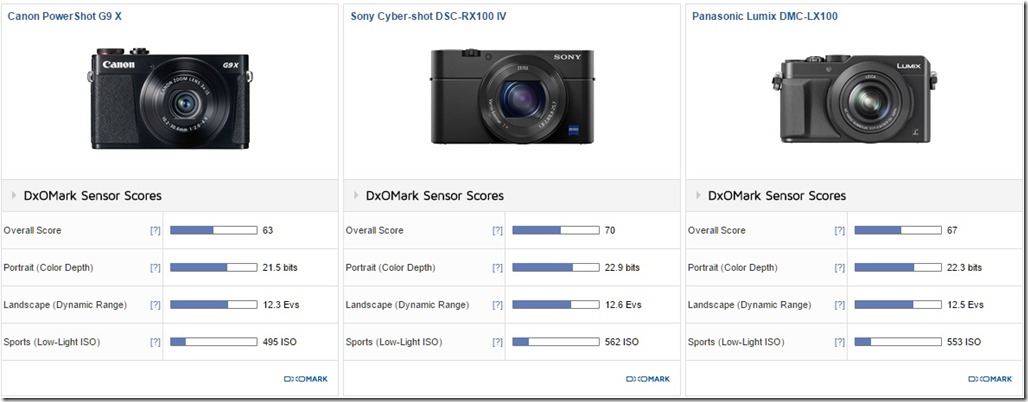- Photo Safaris
- Alaska Bears & Puffins World's best Alaskan Coastal Brown Bear photo experience. Small group size, idyllic location, deluxe lodging, and Puffins!
- Participant Guestbook & Testimonials Candid Feedback from our participants over the years from our photo safaris, tours and workshops. We don't think there is any better way to evaluate a possible trip or workshop than to find out what others thought.
- Custom Photo Tours, Safaris and Personal Instruction Over the years we've found that many of our clients & friends want to participate in one of our trips but the dates we've scheduled just don't work for them or they'd like a customized trip for their family or friends.
- Myanmar (Burma) Photo Tour Myanmar (Burma) Photo Tour December 2017 -- with Angkor Wat option
- Reviews Go hands-on
- Camera Reviews Hands-on with our favorite cameras
- Lens reviews Lenses tested
- Photo Accessories Reviews Reviews of useful Photo and Camera Accessories of interest to our readers
- Useful Tools & Gadgets Handy tools and gadgets we've found useful or essential in our work and want to share with you.
- What's In My Camera Bag The gear David Cardinal shoots with in the field and recommends, including bags and tools, and why
- Articles About photography
- Getting Started Some photography basics
- Travel photography lesson 1: Learning your camera Top skills you should learn before heading off on a trip
- Choosing a Colorspace Picking the right colorspace is essential for a proper workflow. We walk you through your options.
- Understanding Dynamic Range Understanding Dynamic Range
- Landscape Photography Tips from Yosemite Landscape Photography, It's All About Contrast
- Introduction to Shooting Raw Introduction to Raw Files and Raw Conversion by Dave Ryan
- Using Curves by Mike Russell Using Curves
- Copyright Registration Made Easy Copyright Registration Made Easy
- Guide to Image Resizing A Photographers' Guide to Image Resizing
- CCD Cleaning by Moose Peterson CCD Cleaning by Moose Peterson
- Profiling Your Printer Profiling Your Printer
- White Balance by Moose Peterson White Balance -- Are You RGB Savvy by Moose Peterson
- Photo Tips and Techniques Quick tips and pro tricks and techniques to rapidly improve your photography
- News Photo industry and related news and reviews from around the Internet, including from dpreview and CNET
- Getting Started Some photography basics
- Resources On the web
- My Camera Bag--What I Shoot With and Why The photo gear, travel equipment, clothing, bags and accessories that I shoot with and use and why.
- Datacolor Experts Blog Color gurus, including our own David Cardinal
- Amazon Affiliate Purchases made through this link help support our site and cost you absolutely nothing. Give it a try!
- Forums User to user
- Think Tank Photo Bags Intelligently designed photo bags that I love & rely on!
- Rent Lenses & Cameras Borrowlenses does a great job of providing timely services at a great price.
- Travel Insurance With the high cost of trips and possibility of medical issues abroad trip insurance is a must for peace of mind for overseas trips in particular.
- Moose Peterson's Site There isn't much that Moose doesn't know about nature and wildlife photography. You can't learn from anyone better.
- Journeys Unforgettable Africa Journeys Unforgettable -- Awesome African safari organizers. Let them know we sent you!
- Agoda International discounted hotel booking through Agoda
- Cardinal Photo Products on Zazzle A fun selection of great gift products made from a few of our favorite images.
- David Tobie's Gallery Innovative & creative art from the guy who knows more about color than nearly anyone else
- Galleries Our favorite images
Canon G9 X field-tested: Best camera you can easily fit in a pocket
Canon G9 X field-tested: Best camera you can easily fit in a pocket
Submitted by David Cardinal on Tue, 07/26/2016 - 08:21
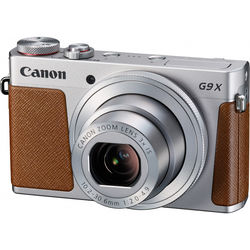 The appeal of a camera you can always have with you is obvious. For an increasing number of people that’s their smartphone. But if you want to have something with a bigger sensor and a zoom lens, a compact point-and-shoot is the way to go. That creates something of a Goldilocks problem – the cheap, small ones aren’t much better than a phone, and the high-end ones don’t fit in a pocket. Canon has done a good job over the years with its S series in finding a middle ground – reasonable sensor, good features, and Raw capability. I’ve been shooting with the newest version, rebranded as the Canon G9 X, and have been impressed by the upgrade in image quality, while learning to like, or at least live with, the new Touchscreen-centric interface…
The appeal of a camera you can always have with you is obvious. For an increasing number of people that’s their smartphone. But if you want to have something with a bigger sensor and a zoom lens, a compact point-and-shoot is the way to go. That creates something of a Goldilocks problem – the cheap, small ones aren’t much better than a phone, and the high-end ones don’t fit in a pocket. Canon has done a good job over the years with its S series in finding a middle ground – reasonable sensor, good features, and Raw capability. I’ve been shooting with the newest version, rebranded as the Canon G9 X, and have been impressed by the upgrade in image quality, while learning to like, or at least live with, the new Touchscreen-centric interface…
Image Quality
The Canon G9 X features a reasonably-sized 1-inch format sensor with 20MP resolution (same size as in the larger Sony RX100 IV and Canon G7 X, but slightly smaller than the one in the Lumix LX100). I found image quality excellent overall, and its 63 score on DxOMark well deserved. I primarily used the camera to shoot Raw images, and then processed them in either Adobe Photoshop, Adobe Lightroom, or DxO OpticsPro. All three handled the raw data and automatic lens correction well. The sensor is apparently the same as that in the Canon G1X and Canon G7 X (and likely the Sony RX100 II and Sony RX100 III), giving it the same ISO 125-12,800 range. The DIGIC 6 chip does an excellent job on image quality (although in performance it is below the DIGIC 7 chip in the Canon G7 X Mark II).
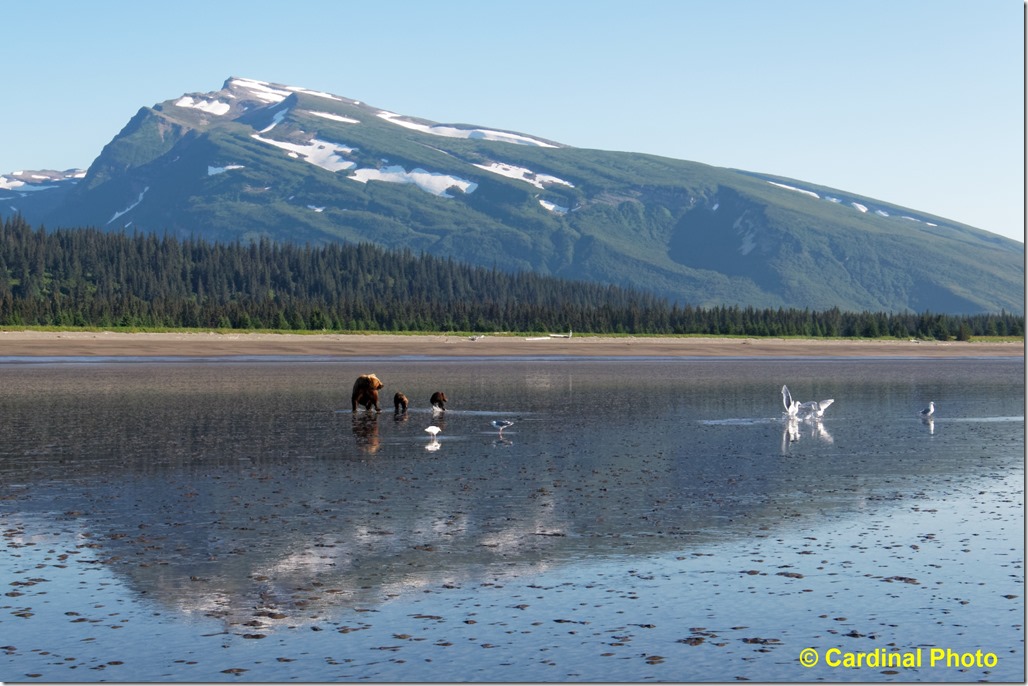
I captured this image in Raw, using Aperture mode set to f/11, giving me a 1/1000s shutter speed at ISO 800.
It was something of a “grab shot” as I had my main camera on a tripod for close ups, otherwise I would have thought to lower the ISO
Image quality strengths and weaknesses
Canon G9 X IQ compared to other Canon options:
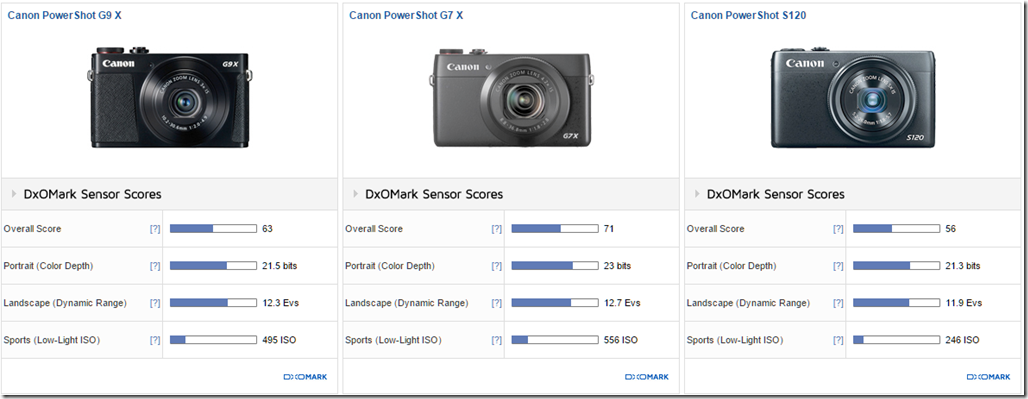
The larger sensor on the Canon G9 X (compared to the similarly-sized S120) shows its strength in the large gain in low-light performance. The Canon G7 X, which has a similarly-sized sensor, delivers another jump in quality, but at a 40% premium in size, weight, and price. Note that this is the Mark I version of the G7. The Canon G7 X Mark II version, newly released, has the same sensor and lens, but much-improved performance thanks to the new DIGIC 7 processor chip.
Canon G9 X IQ compared to larger, more expensive, alternative:
Getting used to a Touchscreen
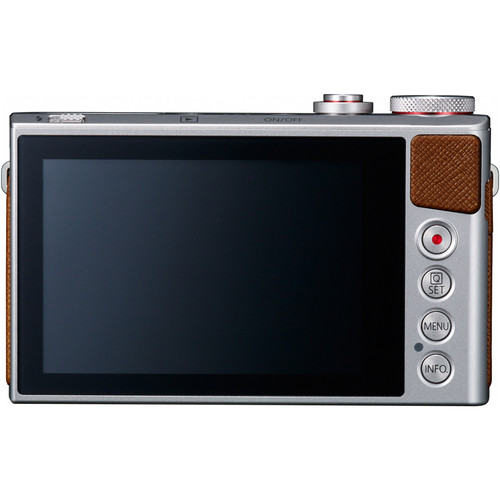 As an old-school photographer in many ways, I've been slow to become enthusiastic about touchscreens. In my book, the best camera is one you can run without taking your eye off the viewfinder, or even looking at the camera. This is easiest with large DSLRs, of course, as they have plenty of room for controls and feature a large, optical viewfinder. Point and shoots have always suffered from less-obvious controls and a small viewfinder, but recently both have been almost completely replaced with a touchscreen LCD -- used for both composition and control. There doesn't seem to be any way (other than sticking with an old-model or larger camera) to avoid this trend if you want the latest model camera, and the Canon G9 X is no exception. So, I took the plunge and committed myself to giving the touchscreen a serious field test. Here's what I found:
As an old-school photographer in many ways, I've been slow to become enthusiastic about touchscreens. In my book, the best camera is one you can run without taking your eye off the viewfinder, or even looking at the camera. This is easiest with large DSLRs, of course, as they have plenty of room for controls and feature a large, optical viewfinder. Point and shoots have always suffered from less-obvious controls and a small viewfinder, but recently both have been almost completely replaced with a touchscreen LCD -- used for both composition and control. There doesn't seem to be any way (other than sticking with an old-model or larger camera) to avoid this trend if you want the latest model camera, and the Canon G9 X is no exception. So, I took the plunge and committed myself to giving the touchscreen a serious field test. Here's what I found:
Touchscreen -- The Good
The Canon G9 X touchscreen provides both click to focus and click to focus and shoot options, which is pretty cool -- and of course something that smartphone shooters have all come to expect. The simple ability to tap on a setting to change it also makes the camera much easier to learn than one that requires hunting through the manual to learn the controls. Being able to simply click to change the function of the lens control ring, turn touch to shoot on and off, etc., is nice. Image review is also a cinch using gestures on the LCD.
It is actually possible -- although not intuitive -- to navigate through the camera's menu system without using the touchscreen, using the Zoom lever and lens control ring. Kudos to Canon for making this possible. The fixed-in-place 3-inch, 1MP, LCD itself is quite good, and features adjustable brightness, although it is still hard to see in bright light.
Touchscreen -- The Bad
In bright light, the camera's LCD is very hard to read (like most of them). Unfortunately, unlike a camera with buttons for controls, that makes it very hard to see or change settings. Also, unlike a camera with a viewfinder, it can even be difficult to compose images. I found myself trying to shade the camera as best I could many times when shooting outdoors. The LCD does have a brightness adjustment, which helps a little. If you are far-sighted and need reading glasses, you'll also find yourself needing them, as the text and touchable control areas on the LCD are very small. This too was fairly inconvenient, and I found myself using default settings when I didn't have enough time to squint or get out my reading glasses to change an option.

Raw images from the Canon G9 X are certainly suitable for “pro quality” use, although of course not a match for larger sensors found in DSLRs.
Taken one soft-light morning between bear shoots on our Alaska Bear & Puffin safari.
Other features
The Canon G9 X has integrated WiFi, and is the smallest camera other than the DxO ONE to feature a 1-inch format sensor. The JPEG burst rate is great at 6fps, but slows to 1fps with Raw. 3x zoom may be a little short for some people. As with many compact cameras, the mode dial can be accidentally moved, although this only happened once or twice to me in a month of shooting. The camera is comfortable in my hand, and easy to use once you get your head around the touchscreen. There are lots of scene modes, except for Panorama.
Of course, the biggest feature of the Canon G9 X is its small size and light weight. At just over 7 ounces, and 4-inches x 2.3-inches x 1.2-inches, it is the only 1-inch-format camera other than the DxO ONE that can fit easily in a shirt or pants pocket.
Missing features
There are several features missing from the Canon G9 X that would have made it even more compelling as a pocket point and shoot. First is that Canon continues to not allow Raw capture in the camera's Auto modes. This is just plain silly, and makes those modes much less useful for serious photographers. Second, there is no panorama function. Sure, it is not that hard to stitch a sequence of images together, and for best quality a series of Raw images stitched using software is preferred, but for casual image capture a Pano mode has been standard on most other vendor's cameras that compete in the high-end point-and-shoot market. Finally, I still really miss the integrated GPS capability that Canon dropped after the excellent S100 model. Yes, for those using a smartphone with the camera you can recreate most of that functionality, but it is un-necessarily painful, and if you are already using your smartphone, especially one that shoots Raw, then you may wonder why you're pulling out a second camera. Not surprisingly, there is also no hot shoe on the camera, but it does have a small pop-up flash.
Video is also limited to 1080p, while some of the camera’s rivals have stepped up to 4K video (although in larger and more expensive packages). You can charge the camera battery in the included charger or simply plug the camera in over USB.

Even though the Canon G9 X doesn’t have a panorama mode, you can certainly capture a series of frames like this one and stitch them together in Photoshop
Gull Island, on an afternoon outing to photograph Puffins, Seals, and various other birds and scenics on our Alaska Bear & Puffin safari.
Also: Note that the advertised burst rates (from 4fps to 6fps) only apply to JPEG shooting. Raw shooting (in my testing at least) slowed the camera down to less than 1 fps.
Canon G9 X: Should you buy one?
I'm pretty much sold on replacing my venerable S100 with one. The gains in image quality (from 50 to 65 on DxOMark) are simply too large to ignore. Along with that I get a lot of bells and whistles that, while not essential to me, come in handy. That includes greatly improved WiFi, a faster CPU for quicker and more flexible focusing, touchscreen, XXX. Basically, if you want the best possible camera that can fit in a shirt pocket, the Canon G9 X is the one to buy. If you are willing to go larger and spend more, you can get a more complete feature set and even better images with a model like the Lumix LX100 (but it is twice the size and weight and nearly twice the price). Another option is the Canon G7 X, that has a similar sensor to the Canon G9 X, but more features packed into its 40% larger and heavier body. The Canon G9 X also has a very-limited zoom range (28-84mm equivalent), so if you want a small superzoom, look at the Sony HX80 instead.
If you want to take the plunge you can get the Canon G9 X in either Black or a cool-looking silver and brown for $449 from B&H.

It’s smart and fairly-quick AF with face detect make the Canon G9 X a no-brainer for casual portraits
Canon G9 X, 1/250s @ f/4, ISO 125
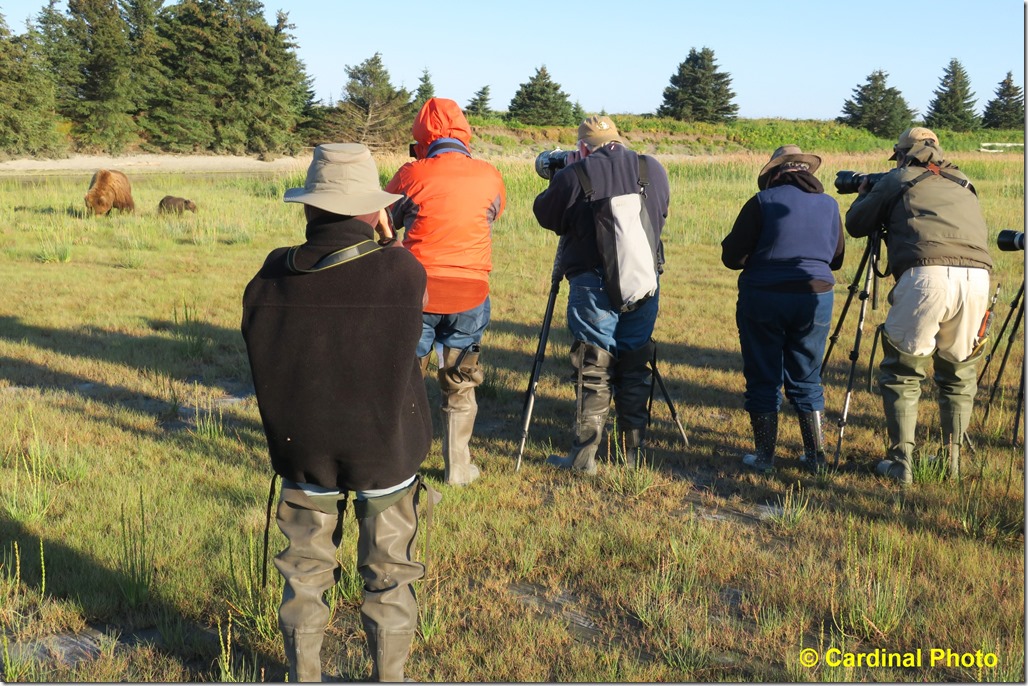
No matter what you’re shooting, having a pocket camera is useful. Here I was able to step away from our tripods and get a nice shot of our group.
This is an un-edited JPEG. Canon G9 X, 1/1000s @ f/6.3, ISO 400, Alaska Bear & Puffin safari.
Complete Specs
Pixels
Actual: 20.9 Megapixel
Effective: 20.2 Megapixel
Sensor
1" CMOS
Bit Depth
14-bit
File Formats
Still Images: JPEG, RAW
Movies: MP4, MPEG-4 AVC/H.264
Audio: AAC LC
Max Resolution
20.2 MP: 5472 x 3648
Aspect Ratio
1:1, 3:2, 4:3, 16:9
Image Stabilization
Optical
Lens
EFL: 10.2-30.6mm (35 mm equivalent: 28-80mm)
Aperture: f/2.0 (W) - 4.9 (T)
Zoom
Optical: 3x
Digital: 4x
Focus Range
Wide: 2" (5.08 cm) - Infinity
Telephoto: 1.1' (33.53 cm) - Infinity
Macro: 2" (5.08 cm) - 1.6' (48.77 cm)
ISO Sensitivity
Auto, 125-6400 (Extended Mode: 125-12800)
Shutter
30 - 1/2000 second, Bulb Mode
1 - 1/2000 second in Auto Mode
1/8 - 1/2000 second in Movie Mode
Exposure Metering
Center-weighted, Evaluative, Spot
Exposure Modes
Modes: Aperture Priority, Auto, Creative Filters, Creative Shot, Custom, Hybrid Auto, Manual, Movie, Program, Shutter Priority
Compensation: -3 EV to +3 EV (in 1/3 EV steps)
Shooting Modes
Background Defocus
Fireworks
Fish-Eye Effect
HDR
Handheld Night Scene
Miniature Effect
Monochrome
Movie
Nostalgic
Portrait
Poster Effect
Soft Focus
Star Nightscape
Star Portrait
Star Time-Lapse Movie
Star Trails
Super Vivid
Toy Camera Effect
White Balance Modes
Auto, Cloudy, Custom 1, Custom 2, Daylight, Flash, Fluorescent, Fluorescent H, Tungsten
Continuous Shooting
Up to 6 fps at 20.2 MP for up to frames
Up to 4.3 fps at 20.2 MP for up to frames
Self Timer
10 Sec, 2 Sec
Interval Recording
Yes
Flash Modes
Auto
Forced On
Off
Slow Sync
Built-in Flash
Yes
Maximum Effective Flash Range
Wide: 1.64 - 19.69' (0.5 - 6 m)
Telephoto: 1.64 - 7.87' (0.5 - 2.4 m)
Memory Card Type
SD
SDHC
SDXC
Video Recording
Yes, NTSC/PAL
Resolution
1920 x 1080p: 59.94 fps, 29.97 fps, 23.98 fps, 14.985 fps
1280 x 720p: 29.97 fps, 6 fps, 3 fps, 1.5 fps
640 x 480p: 29.97 fps, 6 fps, 3 fps, 1.5 fps
Video Clip Length
Up to 4 GB or 29 Min 59 Sec
Audio Recording
Built-in Mic: With Video, Stereo
Screen
3.0" LCD Rear Touch Screen (1,040,000 pixels)
Screen Coverage
100%
Connectivity/System Requirements
Connectivity
HDMI D (Micro), Micro-USB, USB 2.0
Wi-Fi
Yes, 802.11b/g/n built-in
Operating/Storage Temperature
Operating
32 to 104°F (0 to 40°C)
Humidity: 10 - 90%
Battery
1x NB-13L Rechargeable Lithium-Ion Battery Pack, 3.6 VDC, 1250 mAh
AC Power Adapter
ACK-DC110 (Optional)
Dimensions (WxHxD)
3.9 x 2.3 x 1.2" / 98.0 x 57.9 x 30.8 mm
Weight
7.37 oz / 209 g with battery and memory card
Package Weight
1.25 lb
Box Dimensions (LxWxH)
6.2 x 5.6 x 2.8"
- Log in to post comments

